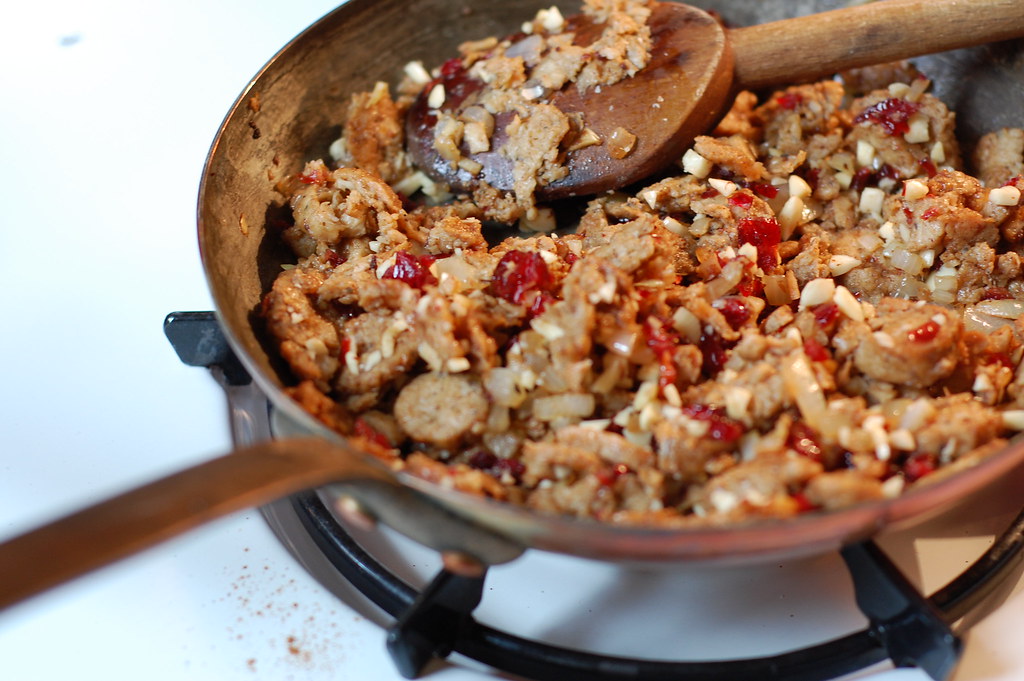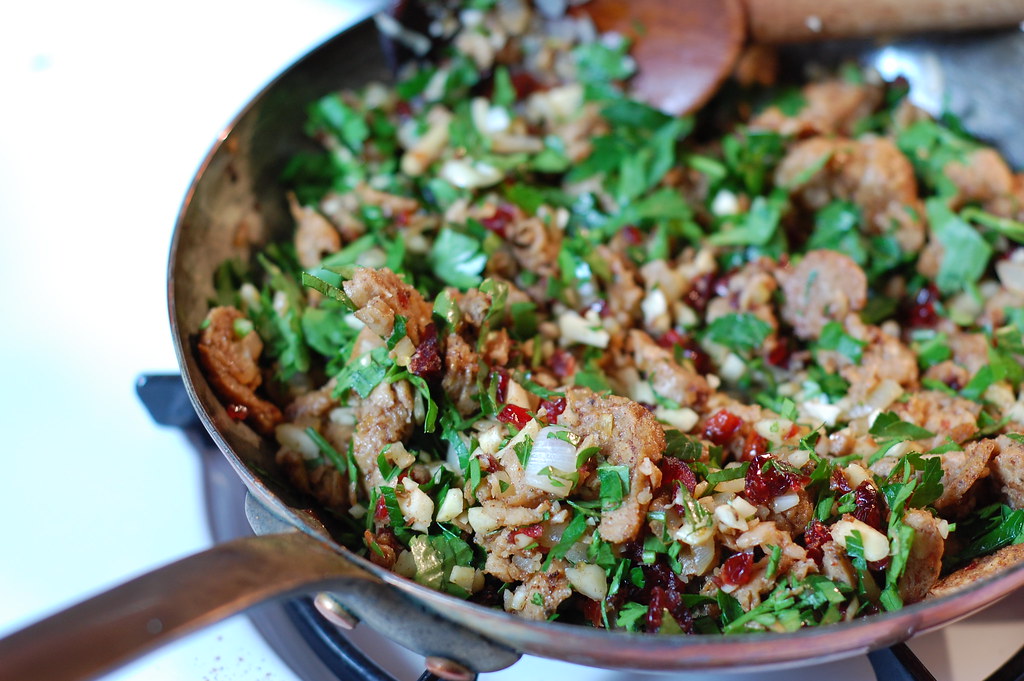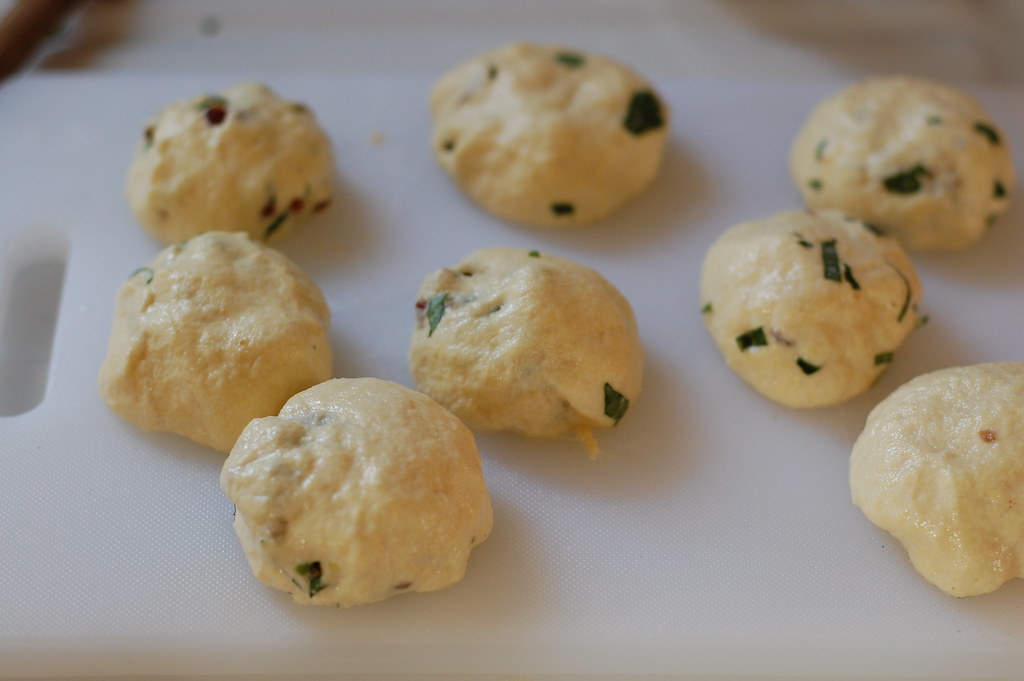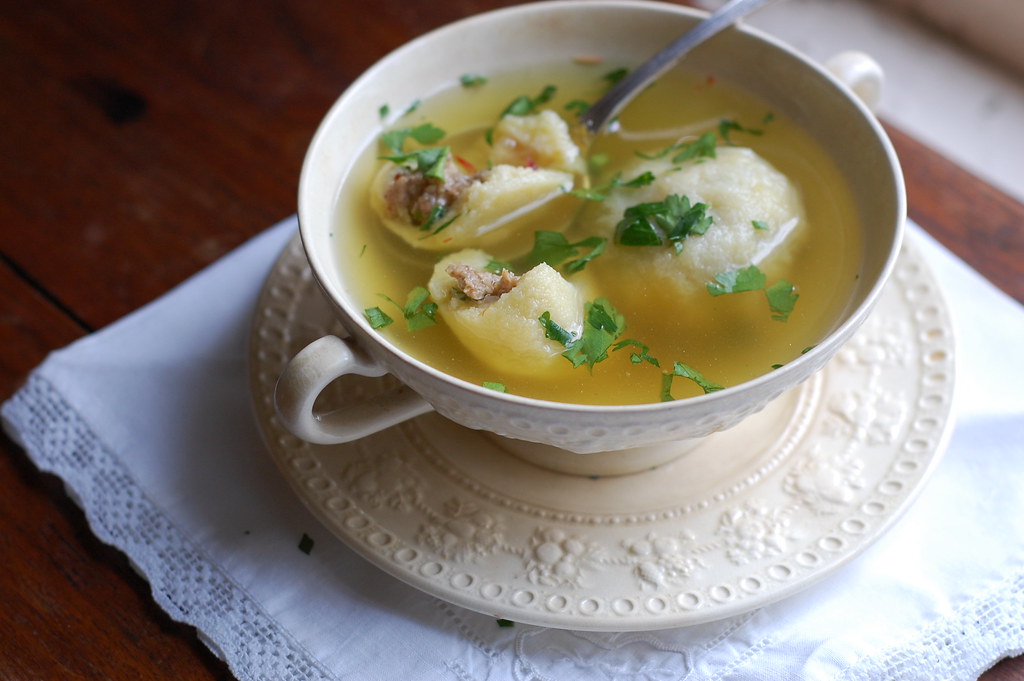 If I could write a cookbook from the ground up, I'd want to travel all over the towns of Kurdistan, from the mountains of southern Turkey to the Tigris in Iraq to northern Iran, and collect their recipes. I want to know more about malthoum and kebab kishkash, about the wheat harvest in Mosul and mountain cheeses. This region is a great reminder that the borders of the modern Middle East were mainly drawn by arbitrary lines sketched on a map, and there are a lot of different ways to view the Middle East along ethnic, religious, and even culinary or linguistic lines.
If I could write a cookbook from the ground up, I'd want to travel all over the towns of Kurdistan, from the mountains of southern Turkey to the Tigris in Iraq to northern Iran, and collect their recipes. I want to know more about malthoum and kebab kishkash, about the wheat harvest in Mosul and mountain cheeses. This region is a great reminder that the borders of the modern Middle East were mainly drawn by arbitrary lines sketched on a map, and there are a lot of different ways to view the Middle East along ethnic, religious, and even culinary or linguistic lines.

My introduction to the diversity of this region came while living in Damascus, where I spent a good amount of time with a Christian family that hailed from Hasake and Qamishli, in the far northeastern corner of Syria. The Kurdish region stretches from it's western tip in Aleppo, Syria through Turkey, Iraq, and the it's eastern edge in Iran. Western media seems to paint this region simply as Kurdish, but in reality it's a fascinatingly beautiful part of the world that has long been home to a wide variety of ethnicities and religions: there's Armenians and Arabs, Yazidis and Zoroastrians, a large Christian population, including Assyrians and Chaldeans, and the region had a sizeable Jewish population before 1948. I had two Kurdish friends in Damascus who regularly conversed in Sorani and introduced me to colorful Kurdish textiles and fiercely flavored red pepper dip. We went to a concert of Kurdish music held at the French Embassy one evening (Kurdish music and gatherings are banned from public venues in Syria), and I saw old men cry at the joy of being able to share their beautiful songs.
 The cuisine of Kurdistan is rich with the influences of Arab, Armenian, and Persian cooking, and it's also terrifically unexplored. The most famous dish from this region is kubbe, a meat-stuffed dumpling poached in broth. As the name implies, kubbe is related to kibbe, the Middle Eastern meat and bulgur dumplings (or patties, or casserole, depending on the incarnation). Similarly, there are many variations of kubbe- some people make the dumpling shell with a mixture of bulgur and semolina, some use all semolina, others add some matzo meal or use ground rice. The broth always has a slight tart element to it but it can vary from a simple lemony chicken broth to a saffron broth to a tomato-tamarind broth favored in Iraq or even a plum-flavored soup in Iran.
The cuisine of Kurdistan is rich with the influences of Arab, Armenian, and Persian cooking, and it's also terrifically unexplored. The most famous dish from this region is kubbe, a meat-stuffed dumpling poached in broth. As the name implies, kubbe is related to kibbe, the Middle Eastern meat and bulgur dumplings (or patties, or casserole, depending on the incarnation). Similarly, there are many variations of kubbe- some people make the dumpling shell with a mixture of bulgur and semolina, some use all semolina, others add some matzo meal or use ground rice. The broth always has a slight tart element to it but it can vary from a simple lemony chicken broth to a saffron broth to a tomato-tamarind broth favored in Iraq or even a plum-flavored soup in Iran. Ever since I first made kubbe, kneading about 20 pounds of dough with two other women on the floor of a Damascene apartment, I've been collecting kubbe recipes and tips. These days I make an all semolina dough and stuff it with a lamb mixture brightly spiced with parsley, dried fruits and pine nuts. A homemade chicken stock with a good dose of fresh lemon juice and a pinch of saffron (if I'm feeling plush) makes the base of the soup. You don't have to have any interest in Kurdish cuisine to love kubbe, there's something universally appealing about these dumplings in warm lemony broth.
Ever since I first made kubbe, kneading about 20 pounds of dough with two other women on the floor of a Damascene apartment, I've been collecting kubbe recipes and tips. These days I make an all semolina dough and stuff it with a lamb mixture brightly spiced with parsley, dried fruits and pine nuts. A homemade chicken stock with a good dose of fresh lemon juice and a pinch of saffron (if I'm feeling plush) makes the base of the soup. You don't have to have any interest in Kurdish cuisine to love kubbe, there's something universally appealing about these dumplings in warm lemony broth. Kubbe is very popular in Israel, where it was brought by Jewish immigrants from northern Iraq, it's similarity to matzo ball soup makes it a popular choice for Passover, which begins tonight. If you want to make it for Passover, use matzo meal in the dough, as semolina is hametz.
 Kubbe (Meat-Stuffed Semolina Dumplings in Broth)
Kubbe (Meat-Stuffed Semolina Dumplings in Broth)Though the dough can seem difficult to work with at first, in reality it's quite forgiving, if it tears merely patch it with another bit of dough. I've made this for vegetarians using vegetarian sausage and vegetable broth (heresy, I know!) and even avowed carnivores couldn't tell the difference. Makes about 4 main-coarse servings.
for the dough:
2 cups fine semolina (semolina flour, often found in the pasta aisle, works perfectly)
1/4 cup flour
pinch salt
1 cup hot water
for the filling:
1 small onion or shallot, diced
1 lb lean ground lamb (you can also use beef)
1/4 teaspoon each cinnamon, allspice
1/4 cup chopped dried cherries, currants, or cranberries
1/2 cup chopped parsley
2 heaping tablespoons pine nuts or chopped slivered almonds
for the broth:
6 cups good homemade chicken stock
1/2 cup fresh lemon juice
a pinch of saffron
salt, a tiny bit of red pepper to taste
chopped parsley for serving
1. Make filling: Heat some olive oil in a saute pan. Add the onion and saute until softened, a few minutes. Add the ground lamb, season with salt and cook over medium heat, breaking up the pieces, until it is nicely browned, 10-15 minutes. Stir in the cherries and pine nuts in the last few minutes of cooking. Stir in the parsley to combine and then remove from the heat.
2. Make dough: mix together semolina, flour, and salt in a bowl. Gradually mix in hot water, stirring with a fork, until the consistency of playdough. Add a touch more water if necessary. Let rest 15 minutes. Knead the dough again (I do this by pressing it around with a silicone spatula) until pliable. Working with damp hands, take a walnut sized piece of dough and flatten it in your palm. Place a small spoonful of the meat mixture in the center, then close up the dumpling and roll it around between your palms. Your goal is to have a very thin shell encasing a good portion of meat, but this takes some practice. Continue forming dumplings, always keeping your hands damp to prevent sticking.
3. Bring a pot of water to boil, lower the heat so the water is just simmering. Poach the dumplings in the water (you may have to do this in batches) for 15 minutes. The dumplings may float before this, but they need the full 15 minutes for the semolina to cook. Remove with a slotted spoon.
4. While the kubbe are poaching, bring chicken broth to a simmer, add the saffron and season to taste. Stir in the lemon juice. Add as many kubbe as you are going to serve to the broth (reserve any extra dumplings separately), and let reheat for 1-2 minutes. Place a few kubbe in a bowl, ladle the broth over top. Sprinkle with parsley and serve.






21 comments:
You just made my Jewish mouth water something aweful..come cook for me anytime.
kidding..
You DO have simply wonderful recipes..thanks for sharing.
Ooh. I love matzo ball soup. I'll add this to my to-do list. :)
wow...that looks so delicious. just love reading about your food and your travels!
I haven't had Kibbeh since my trip to Damascus years ago. Now I'm tempted to try whipping it up myself. Yours looks lovely!
Sara- did you have kibbe or kubbe in Damascus? Kibbe, obviously, would be quite common, but it would be very unusual to find kubbe in Damascus unless you had it in someone's home.
oh my. this looks scrumptious. i do believe i'll have to try this soon! i adore your blog, by the way. every dish looks lovely and hearing about your travels make it a great treat. can't wait until i have some time to try a few of your recipes!
Hmm this is interesting. I have been to the M.East several times (have origins from there too) and I've never seen this kind of kubbe before. The "kibbeh" I am familiar with is usually fried or cooked in the oven if it's flat, and the colour is brown. I've also tried "kibbeh fi kishk" which is very good as well, but I've never seen this kubbe before! So once again, interesting post!
I saw the picture before I read the header and did, indeed, think you'd made matzo ball soup. This looks great- and I loved reading a bit about the variations on both name and soup. Tamarind is a really interesting variation; it's an ingredient I usually think of as being characteristic of a southeast asian dish.
wow, that's a great idea for pesach. thank you so much!
This sounds like something I would love, I don't like to think of all the food I'm missing out on that I've never tried or heard of!
At first glance that sounds like chicken matzo ball or chicken kreplach soup!
I just happened onto your site while searching for apple cake (your slow-baked version looks wonderful) and noticed the word "kubbe" while adding your feed to my reader. Thank you so much for posting this recipe. Kubbe is one food I miss dearly from my time in Israel which I haven't been able to replicate here in California. Your recipe will certainly help :).
Your kubbeh looks delicious. However, what you are calling kibbeh and kubbe is all called kubbeh here in Israel. Most likely we call all of it kubbeh because it is pronounced kubbeh in Iraqi Arabic. So, no matter if it is Iraqis, Kurdish, Lebanese or Syrian, fried, in soup or baked and layered with meat in a pan; it is all called kubbeh. I love kubbeh, all types. I really like kubbat halab which is an Iraqi kubbeh made with a rice crust. This is typically served during Passover.
I'm definitely doing this one this weekend Thanks for a great post. If you're ever in the NYC area, you can stay at my place & I will be your willing kitchen slave whilst you cook.
this is like armenian manti or even dumplings in broth but we make it with 'pasta' or 'noodle' dough instead of semolina and top it with yoghurt and herbs. very common.
I've just been going over the different kinds of kubbeh I've encountered here in the Galilee - the Kurdish kind in sour-ish soup -the deep fried ones that are standard fare in any Middle-Eastern restaurant - and the raw-meat variety that is a local Arab delicacy - in certain circles...
You might be interested in my blog - not so diligently updated as yours - about the multicultural culinary landscape of the Galilee: www.galileecuisine.wordpress.com
All the best - Abbie Rosner
I would just like to take time too thank the active members for doing what you do and making the community what it is im a long time reader and first time poster so i just wanted to say thanks.
I would just like to take time too Thank all the people for doing what you do and making the community what it is im a long time reader and first time poster so i just wanted to say thanks.
I would just like to take some time out thank the posters for doing what you do and making the community what it is im a long time reader and first time poster so i just wanted to say thanks.
I just want too take some time too Thank everyone for doing what you do and make this community great im a long time reader and first time poster so i just wanted to say thanks.
Hi,
These are Assyrian dumplings called koutleh. They were first only known by the Assyrian christians in what you now call kurdistan but is ancient Assyria. The Kurdish jews introduced these in Israel,and they don't call them kubbe but kotleh. Exactly like the Assyrians they lived with in Zakho in North-Iraq. In fact the Kurdish jews spoke the Assyrian language Surith.The kurdish cuisine is closer to persian food,because they are related. But this is a Assyrian dumpling we are proud off.
Post a Comment